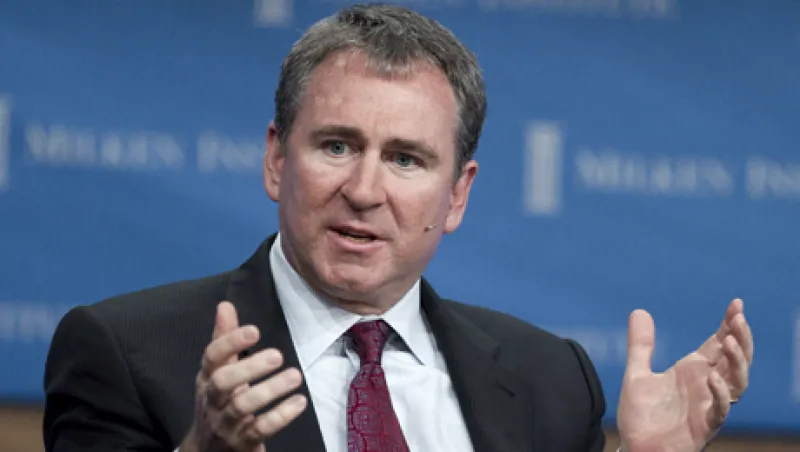Last year was not exactly a memorable one for many hedge fund managers, as a large number finished the year up or down a point or two.
Not Citadel’s Ken Griffin, however. His two main funds—Wellington and Kensington—finished strong with a 2.4 percent gain in December, putting them up 20.4 percent for the year, according to investors.
Perhaps most significantly, 80 percent of investors have finally hit the high water mark and the remaining 20 percent are within a percentage point or two of breaking even, according to sources.
For Griffin, this has been a long time coming since he lost 55 percent in 2008.
In 2010 Wellington was up 11.11 percent while Kensington climbed 10.75 percent.
Last year the multi-strategy funds were profitable across all of strategies. But they were said to have done especially well in equities, energy and convertibles.
One investor says Citadel runs a market neutral book. And while many managers complained about the high correlation in the market last year, Citadel did not experience it as much.
Citadel also did fairly well trading interest rates and modestly well in global macro.
In addition, its Global Equities Fund was up 21 percent in 2011.
Investors are just now starting to learn how their hedge fund investments fared in 2011.
For example, Steve Cohen’s SAC Capital was up 8 percent last year, while Jeff Ubben’s ValueAct Capital Partners, L.P., an activist fund with a concentrated portfolio, was up 15 percent.
However, others did not fare nearly as well. David Einhorn’s Greenlight Capital lost 1.8 percent in December and was up 2.1 percent for the year, while Dan Och’s OZ Master Fund lost 0.58 percent and Wayne Cooperman’s Cobalt Capital lost 0.70 percent last year.
Earlier this year, Griffin reportedly eased restrictions on withdrawals. It raised to 10 percent the amount of their capital investors could withdraw each quarter, from one-sixteenth. It also now permits investors to collectively withdraw up to 5 percent of the funds’ total assets each quarter, up from 3 percent. It also trimmed the withdrawal charges for investors who take out more than the maximum allowed.
Griffin is legendary for successfully trading convertibles from his dorm room at Harvard College, where he graduated in 1989 with a B.A. in economics. He launched his own firm the following year.







